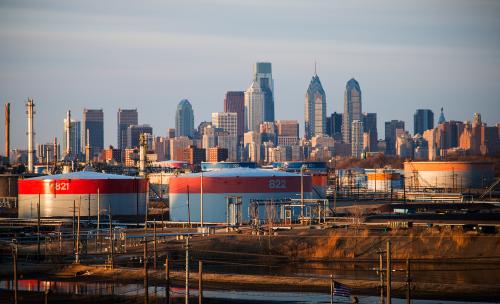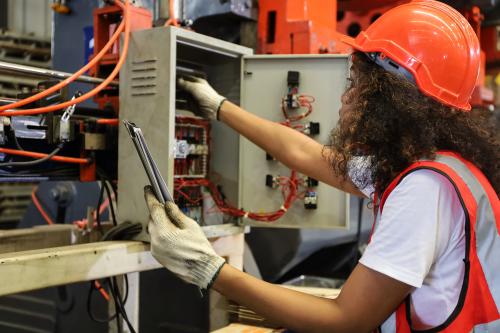As one of the world’s 19 “knowledge capitals” with exceptionally high levels of productivity, talent, and innovation alongside renowned parks and museums, beaches, and weather, San Diego is thriving in the global economy. But like many cities in the Southwest, we face a long-term challenge to our competitiveness and quality of life because of something we lack: local drinking water sources.
San Diego currently imports 85 percent of its water from the Colorado River and Northern California Bay Delta. With such limited control, San Diego is vulnerable to rising water costs from wholesalers, recurring droughts, climate change, and disruptions in water supply infrastructure due to natural disasters. The cost of imported water has tripled over the past 15 years, and continues to rise.
To secure our economic and environmental future, our city knew we needed to act now on water supply, reliability, and cost. That’s why we launched Pure Water San Diego. Complementing traditional conservation and new “smart city” applications to better manage existing resources, our city will use advanced water purification technologies to recycle wastewater into safe, high-quality drinking water. This recycling will produce approximately one-third of San Diego’s water supply by 2035. And while this effort can be a model to Southwestern cities facing similar water scarcity challenges, it’s also a reminder how cities all across the country will need to plan and invest more strategically in their water infrastructure amidst continued urban growth and climate concerns.
With San Diego’s existing water system, most of the wastewater leaving homes and businesses goes to the city’s wastewater treatment plant and is then discharged into the ocean. The Pure Water San Diego program will complete our water cycle. It will direct wastewater flows away from the ocean and use cutting-edge treatment processes to purify the water to meet or exceed all federal and state drinking water standards. The purified water will head to an existing reservoir where it will blend with imported and local water supplies. Lastly, treatment plants will further treat this water and distribute it to consumers via the existing potable water supply system.
Achieving these goals isn’t cheap, of course. It requires significant investment in the design, construction and operation of several new advanced water purification facilities, pump stations and pipelines, and improvements to existing treatment plants. Additionally, it will require investment in the advanced technology and equipment needed for a comprehensive five-step treatment process required to effectively purify recycled water. The total bill for just the first phase: $1.2 billion.
But once online, the benefits will be transformative. By 2035, the Pure Water San Diego Program will provide 83 million gallons of water per day. This will create a new, more sustainable local water supply. It will also reduce the amount of treated wastewater discharged to the ocean by approximately 50 percent.
Another environmental and ratepayer benefit is the construction of a renewable energy project that will utilize methane captured from the local landfill to power the majority of the Phase 1 facilities, and support implementation of San Diego’s aggressive Climate Action Plan. This innovative approach provides multiple benefits including reduced greenhouse gas emissions, reduced reliance on utility-provided energy and reduced energy costs to run the facilities.
In supporting this massive investment in Pure Water, our local business community recognizes the threats and opportunities. Last month, Stone Brewing Company used recycled water from the test facility to brew a limited-edition “Full Circle” pale ale. One of the world’s most celebrated brewers, Stone’s leadership said their small batch demonstration confirmed water purity exceeded natural sources, and reaffirmed the importance of water reliability to their success.
Water constraints aren’t limited to any one region of the country. Every city must maintain aging pipes, the threat of new contaminants continues to grow, and changing climate patterns make uncertainty our shared reality. Many of our fellow cities face significant backlogs of unfunded projects, deferred maintenance, and pressures to provide both reliable and affordable water.
While solutions won’t be easy, we hope more cities in California and beyond can learn from the San Diego experience in moving forward. Our infrastructure and program design will offer a proof of concept for other regions. Our approach to bringing together diverse environmental and business groups, community, and government leaders to agree on a major local investment in this solution is an example for how to overcome historic policy divisions.
And we all still need the state and federal governments to support our efforts. At best that means matching our local funding. At minimum, we require administrative, regulatory, and legislative decisions that ensure we are empowered to help ourselves. As we are proving in San Diego, local leadership can make a major contribution to solving this century’s national water challenges.





Commentary
San Diego’s Pure Water Program: A sustainable solution to water supply challenges
May 18, 2017